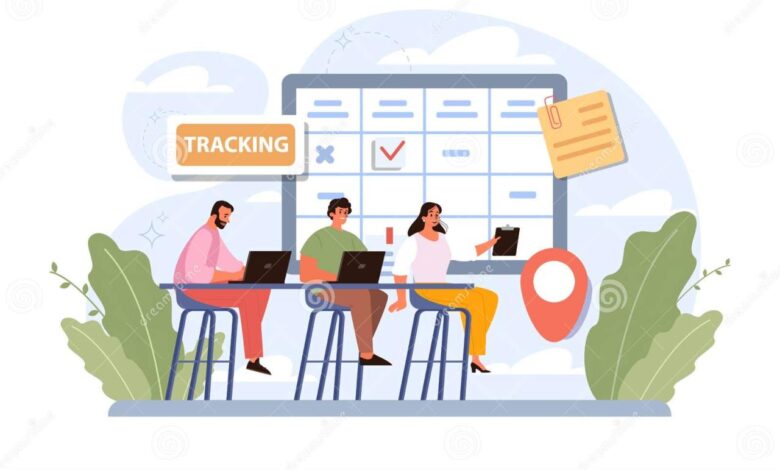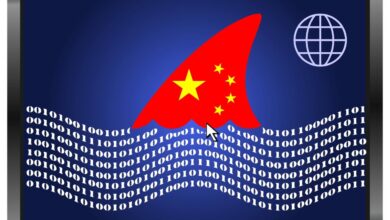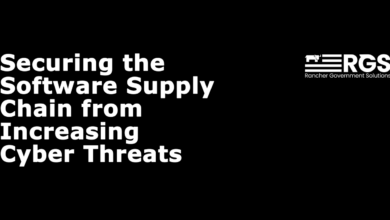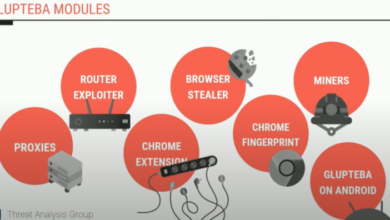
How Tool Consolidation Helps Cybersecurity Teams
How tool consolidation helps cybersecurity teams is a game-changer, folks. Imagine juggling ten different security tools, each with its own interface, updates, and potential vulnerabilities. Sounds exhausting, right? That’s the reality for many security teams, but it doesn’t have to be. Consolidating your security tools into a unified platform offers a wealth of benefits, from significantly reducing your attack surface to boosting team efficiency and slashing costs.
Let’s dive into how this streamlined approach can revolutionize your cybersecurity posture.
The benefits extend far beyond simple convenience. A unified platform provides a single pane of glass for monitoring your entire security landscape, allowing for better threat detection, faster response times, and ultimately, a stronger defense against cyberattacks. We’ll explore the key advantages, potential challenges, and practical strategies for a successful tool consolidation process. Get ready to streamline your security operations and breathe a sigh of relief!
Reduced Attack Surface
Consolidating your security tools is a powerful way to shrink your attack surface, making your organization significantly less vulnerable to cyber threats. A fragmented security landscape, with numerous overlapping tools and disjointed processes, creates numerous points of potential failure and increased complexity. By streamlining to a smaller, more integrated set of tools, you dramatically reduce this risk.Fewer tools inherently mean fewer potential vulnerabilities.
Each security tool, regardless of its sophistication, represents a potential entry point for attackers if improperly configured, patched, or integrated. A sprawling ecosystem of disparate tools increases the likelihood of misconfigurations, overlooked vulnerabilities, and unpatched software. This complexity also makes it harder for security teams to maintain a comprehensive view of their security posture.
Impact of Tool Consolidation on Patching and Update Management
Effective patching and update management are critical for maintaining a strong security posture. A consolidated toolset simplifies this process considerably. Instead of juggling updates and patches across dozens of different platforms, your team can focus on a smaller, more manageable number of tools. This reduces the risk of delays in patching critical vulnerabilities, leaving your organization exposed to attacks.
Imagine the time saved by having a single dashboard showing the update status of all your essential security tools, compared to manually checking each individual system. This efficiency boost allows for more proactive security management, reducing the window of vulnerability.
Minimizing Human Error in Security Operations
Human error is a significant factor in many security breaches. The complexity inherent in managing a large number of disparate security tools increases the likelihood of human error. Consolidated tools, often with automated workflows and centralized management, significantly reduce this risk. For example, a single, integrated security information and event management (SIEM) system can automate many repetitive tasks, such as log analysis and threat detection, reducing the potential for human error in these critical processes.
Similarly, a unified endpoint detection and response (EDR) solution can simplify endpoint security management, reducing the chances of misconfigurations or overlooked vulnerabilities.
Comparison of Attack Surface: Consolidated vs. Fragmented Toolset
| Feature | Fragmented Toolset | Consolidated Toolset |
|---|---|---|
| Number of Tools | 15+ (Example: Separate SIEM, EDR, firewall, vulnerability scanner, etc.) | 3-5 (Example: Integrated SIEM/EDR, next-generation firewall with built-in vulnerability scanning, etc.) |
| Patch Management Complexity | High: Multiple update schedules, diverse patching mechanisms | Low: Streamlined update process, centralized patching |
| Vulnerability Exposure | High: Numerous potential entry points, increased risk of misconfigurations | Low: Fewer potential entry points, reduced risk of misconfigurations |
| Human Error Risk | High: Increased complexity leads to more human errors in configuration and management | Low: Automation and simplification reduce human error |
Improved Security Posture
Consolidating your security tools isn’t just about reducing the number of applications you manage; it’s a fundamental shift towards a stronger, more efficient security posture. By bringing disparate systems under a unified umbrella, you gain significant advantages in visibility, control, and response capabilities, ultimately leading to a more resilient defense against cyber threats. This improved posture isn’t just a feeling; it’s measurable and demonstrable through key performance indicators (KPIs).Enhanced visibility and control are cornerstones of a robust security posture.
With consolidated tools, you gain a single pane of glass view of your entire security landscape. Instead of juggling multiple dashboards and interfaces, you can see all your security data in one place, identifying patterns and anomalies far more efficiently than with scattered systems. This unified view allows for more proactive threat hunting and faster identification of vulnerabilities.
Furthermore, centralized management simplifies policy enforcement, ensuring consistent security practices across all systems.
Effective Integration of Security Tools
Successful tool consolidation hinges on effective integration. This requires careful planning and execution, beginning with a thorough assessment of your existing tools and their capabilities. Prioritize seamless data sharing between tools, enabling correlation of events and a more holistic understanding of potential threats. API integrations are crucial for automated workflows and reducing manual intervention. Consider using a Security Information and Event Management (SIEM) system as a central hub for collecting and analyzing logs from various sources.
For example, integrating your firewall logs with your endpoint detection and response (EDR) solution can reveal sophisticated attacks that might otherwise go unnoticed. A well-defined integration strategy should also include considerations for data normalization and standardization to ensure consistent data formats across different tools.
Centralized Logging and Monitoring for Faster Incident Response
Centralized logging and monitoring are paramount for swift and effective incident response. Instead of searching through multiple logs scattered across various systems, security analysts can quickly access all relevant information in a single, centralized repository. This significantly reduces the Mean Time to Detect (MTTD) and Mean Time to Respond (MTTR) to security incidents. Imagine a scenario where a phishing attack is detected by your email security gateway.
With centralized logging, the security team can immediately see if the compromised account accessed sensitive data, potentially limiting the damage. Real-time alerts and automated workflows further enhance response capabilities, allowing for faster containment and remediation of threats.
Key Performance Indicators (KPIs) for Improved Security Posture
Tracking key performance indicators (KPIs) is crucial for measuring the success of your tool consolidation efforts and demonstrating the improvement in your security posture. These metrics provide objective evidence of your progress and highlight areas for further improvement.
- Mean Time to Detect (MTTD): The average time it takes to identify a security incident.
- Mean Time to Respond (MTTR): The average time it takes to resolve a security incident.
- False Positive Rate: The percentage of alerts that are not actual security incidents.
- Security Incident Volume: The number of security incidents detected over a given period.
- Number of Security Vulnerabilities: The number of identified vulnerabilities in your systems.
- Patching Compliance Rate: The percentage of vulnerabilities that have been patched.
By consistently monitoring these KPIs, you can track the effectiveness of your consolidated security tools and make data-driven adjustments to your security strategy, continuously improving your overall security posture.
Enhanced Efficiency and Productivity
Let’s face it, cybersecurity teams are constantly juggling a multitude of tools, each with its own interface, reporting mechanisms, and quirks. This fragmented approach eats away at valuable time and resources, hindering their ability to effectively protect their organizations. Consolidating security tools onto a unified platform dramatically improves efficiency and boosts overall team productivity.The time-saving benefits are substantial.
Imagine a scenario where incident response requires sifting through logs from five different security information and event management (SIEM) systems, five endpoint detection and response (EDR) tools, and a separate vulnerability scanner. This process can take hours, if not days. With a unified platform, all this data is centralized and accessible from a single pane of glass, significantly reducing investigation time and enabling faster responses to threats.
Time Savings Through Centralized Management
Managing multiple security tools involves a significant operational overhead. Each tool requires separate licensing, updates, configurations, and personnel training. This translates to more administrative tasks, more potential points of failure, and increased complexity. A unified platform simplifies this significantly. Updates are streamlined, configurations are centralized, and training is focused on a single system.
The reduction in administrative overhead frees up valuable time for security analysts to focus on more strategic tasks, such as threat hunting and proactive security measures.
Automation’s Impact on Productivity, How tool consolidation helps cybersecurity teams
Consolidated security platforms often come equipped with powerful automation features. These features automate repetitive tasks like vulnerability scanning, patch management, and incident response. For instance, a unified platform can automatically detect and remediate vulnerabilities, reducing the risk of exploitation and freeing up security engineers from manual patching. Automation also allows for the creation of custom workflows and playbooks to streamline incident response processes, ensuring consistent and efficient handling of security events.
This significantly boosts the team’s productivity and allows them to handle a larger volume of security tasks without increasing headcount.
Resource Allocation Before and After Tool Consolidation
The following table illustrates the difference in resource allocation before and after tool consolidation. These are hypothetical examples, and the specific numbers will vary depending on the organization’s size and security posture.
| Resource | Before Consolidation | After Consolidation |
|---|---|---|
| Security Analysts | 5 (30% time on tool management) | 5 (10% time on tool management) |
| IT Administrators | 2 (50% time on security tool management) | 1 (20% time on security tool management) |
| Annual Licensing Costs | $150,000 | $80,000 |
| Training Costs | $10,000 per year | $3,000 per year |
Cost Savings and Optimization
Tool consolidation isn’t just about improved security; it’s a significant pathway to streamlining budgets and optimizing resource allocation. By reducing the number of security tools, organizations can achieve substantial cost savings across various areas, ultimately improving their bottom line and freeing up resources for other crucial initiatives.
The financial benefits of consolidating security tools are multifaceted and can lead to a substantial return on investment (ROI). These savings aren’t just theoretical; they are tangible and demonstrably achievable through careful planning and execution of a consolidation strategy.
Reduced Licensing Costs
One of the most immediate and impactful cost reductions comes from streamlining software licensing. A fragmented security landscape often involves overlapping functionalities and redundant tools, leading to multiple subscriptions and hefty annual fees. Consolidating to a smaller set of integrated tools eliminates these redundancies, drastically reducing licensing costs. For example, a company might be paying for separate tools for endpoint detection and response (EDR), security information and event management (SIEM), and vulnerability scanning.
A consolidated platform often incorporates these capabilities, eliminating the need for three separate licenses.
Infrastructure and Maintenance Cost Savings
Fewer tools translate directly into reduced infrastructure needs. Each security tool requires server space, storage, and network bandwidth. Consolidation minimizes this footprint, lowering costs associated with hardware, cloud services, and data storage. Moreover, the maintenance burden is significantly reduced. Fewer tools mean less time spent on patching, updating, and troubleshooting, leading to reduced IT staff time and associated labor costs.
For instance, managing five separate SIEM instances requires significantly more time and resources than managing a single, integrated solution.
Reduced Training Costs for Security Personnel
Training security personnel on numerous, disparate tools is time-consuming and expensive. Each new tool requires dedicated training sessions, documentation, and ongoing support. Consolidation simplifies this process. With fewer tools to learn, security teams can focus on mastering a smaller set of integrated solutions, leading to improved efficiency and reduced training costs. Imagine the savings in training time and associated instructor fees when you move from training on five separate vulnerability scanners to just one comprehensive platform.
Total Cost of Ownership (TCO) Comparison
A clear comparison of the Total Cost of Ownership (TCO) between a fragmented and a consolidated security tool approach highlights the financial benefits. The following table illustrates a hypothetical scenario, demonstrating the significant cost savings achievable through consolidation.
| Cost Category | Fragmented Approach (5 Tools) | Consolidated Approach (1 Tool) | Savings |
|---|---|---|---|
| Licensing Fees (Annual) | $100,000 | $40,000 | $60,000 |
| Infrastructure (Hardware & Cloud) | $20,000 | $5,000 | $15,000 |
| Maintenance & Support | $30,000 | $10,000 | $20,000 |
| Training Costs (Annual) | $15,000 | $2,000 | $13,000 |
| Total Annual Cost | $165,000 | $57,000 | $108,000 |
Streamlined Security Operations

Consolidating security tools isn’t just about reducing costs; it’s about fundamentally transforming how your security team operates. A unified platform dramatically improves workflows, fosters collaboration, and accelerates response times, ultimately leading to a more robust and efficient security posture. The benefits extend far beyond simple cost savings, impacting every aspect of your daily security operations.Improved workflow and collaboration are hallmarks of a consolidated security toolset.
Before consolidation, security teams often worked in silos, using disparate tools with incompatible data formats. This led to delays, duplicated efforts, and a lack of holistic visibility. A unified platform breaks down these barriers, enabling seamless data sharing and real-time collaboration across different security teams, such as incident response, threat intelligence, and vulnerability management.
Effective Data Sharing and Communication
Effective data sharing is crucial for streamlined security operations. Imagine a scenario where a security analyst in the incident response team detects a suspicious activity. With consolidated tools, this information can be instantly shared with the threat intelligence team, allowing them to quickly identify the threat actor, their motives, and potential future attacks. Similarly, vulnerability management teams can receive immediate alerts about newly discovered vulnerabilities, enabling them to prioritize patching efforts based on the real-time threat landscape.
This real-time information exchange is only possible with a centralized platform that facilitates seamless data sharing across teams. Key strategies include establishing standardized data formats, implementing automated alerts and notifications, and utilizing collaborative platforms like Slack or Microsoft Teams to facilitate communication and knowledge sharing.
Simplified Incident Response and Threat Management
A unified platform significantly simplifies incident response and threat management. Instead of navigating multiple consoles and disparate systems, security analysts can access all relevant information from a single dashboard. This reduces the time it takes to identify, contain, and remediate security incidents. For example, a single platform might integrate threat intelligence feeds, security information and event management (SIEM) data, and endpoint detection and response (EDR) capabilities, providing a complete view of the attack landscape.
This holistic view allows for faster identification of root causes, quicker containment of threats, and more effective remediation strategies. Furthermore, a unified platform can automate many aspects of incident response, such as threat hunting, vulnerability patching, and incident reporting, freeing up security analysts to focus on more strategic tasks.
Streamlined Security Operations Process
The following flowchart illustrates the streamlined security operations process after tool consolidation.[Imagine a flowchart here. The flowchart would begin with “Security Event Detection” (e.g., SIEM, EDR alerts). This would flow to “Incident Triage and Prioritization” (using a consolidated dashboard to assess severity and impact). Next would be “Incident Response and Investigation” (accessing all relevant data from a single platform).
Then, “Containment and Remediation” (automated actions and manual intervention as needed). Finally, “Post-Incident Analysis and Reporting” (generating reports and lessons learned from a single source of truth). The arrows would indicate the flow between these stages. The flowchart visually demonstrates the efficiency gained through tool consolidation, highlighting the speed and ease of moving between stages compared to a system with multiple, disparate tools.]
Improved Threat Detection and Response
Consolidating your security tools isn’t just about streamlining processes; it’s about fundamentally improving your ability to detect and respond to threats. A unified platform offers a significantly enhanced view of your entire security landscape, allowing for faster identification of anomalies and quicker, more effective remediation. This holistic approach dramatically reduces the time it takes to go from detection to resolution, minimizing the impact of security incidents.The power of consolidated tools lies in their ability to correlate data from various sources.
Instead of sifting through alerts from disparate systems, security analysts can see a single, integrated view of potential threats. This eliminates the noise and confusion inherent in managing multiple, independent security solutions, allowing teams to focus on the most critical issues.
Faster and More Accurate Threat Detection
Consolidated tools provide a single pane of glass view, allowing security analysts to see all relevant security data in one place. This eliminates the need to manually correlate alerts from different systems, which is time-consuming and prone to error. For example, a suspicious login attempt detected by your SIEM can be instantly cross-referenced with data from your endpoint detection and response (EDR) solution to determine if malware is involved.
This integrated approach allows for much faster identification of genuine threats, reducing the mean time to detect (MTTD). The speed of this correlation is amplified by automated workflows that can trigger investigations based on pre-defined rules and thresholds.
Integrated Threat Intelligence Feeds
A unified security platform allows for the seamless integration of threat intelligence feeds from various sources. This provides context to security alerts, enabling analysts to prioritize threats based on their severity and potential impact. For instance, if your SIEM detects a known malicious IP address attempting to connect to your network, the integrated threat intelligence can automatically flag it as high-risk, prompting immediate action.
This proactive approach minimizes the window of vulnerability and reduces the likelihood of a successful attack. Furthermore, the integrated platform can automatically update its threat detection rules based on the latest intelligence, ensuring that your defenses remain current and effective.
Improved Security Orchestration, Automation, and Response (SOAR)
Consolidated tools significantly enhance the effectiveness of SOAR. By integrating different security tools into a single workflow, SOAR can automate many repetitive tasks, such as incident response and threat hunting. For example, when a security alert is triggered, SOAR can automatically investigate the alert, isolate affected systems, and initiate remediation actions, all without manual intervention. This reduces the workload on security analysts, freeing them up to focus on more complex tasks.
Furthermore, SOAR can automate the enrichment of security alerts with threat intelligence, providing analysts with a more complete picture of the threat landscape. This improved context leads to faster and more informed decision-making.
Enhanced Capabilities in Threat Detection and Response
The benefits of using a consolidated security toolset are numerous and impactful. Here’s a summary of the enhanced capabilities:
- Reduced Mean Time to Detect (MTTD): Faster identification of threats due to integrated data analysis.
- Reduced Mean Time to Respond (MTTR): Automated response actions and streamlined workflows reduce the time it takes to remediate threats.
- Improved Accuracy of Threat Detection: Correlation of data from multiple sources reduces false positives and improves the accuracy of threat detection.
- Enhanced Threat Hunting Capabilities: Consolidated data provides a richer context for threat hunting activities, leading to the discovery of previously unknown threats.
- Proactive Threat Mitigation: Integration of threat intelligence allows for proactive identification and mitigation of threats before they can cause damage.
- Better Security Posture: A holistic view of the security landscape enables a more effective security posture.
Challenges of Tool Consolidation
Tool consolidation, while offering significant benefits, isn’t without its hurdles. Successfully navigating the complexities of integrating disparate security tools requires careful planning, robust execution, and a proactive approach to risk management. Ignoring these challenges can lead to project delays, budget overruns, and even a weakened security posture – the opposite of the intended outcome.Integrating disparate security tools presents a significant challenge.
Different tools often use varying data formats, communication protocols, and authentication methods. This incompatibility can make data sharing and correlation difficult, hindering the creation of a unified security view. Furthermore, the integration process itself can be complex and time-consuming, requiring specialized skills and significant resources. For example, integrating a legacy SIEM with a newer cloud-based endpoint detection and response (EDR) solution might require custom scripting, API integrations, and potentially significant data transformation efforts.
Data Migration Complexities
Data migration during tool consolidation is a critical phase fraught with potential problems. The sheer volume of security data generated by various tools can be overwhelming. Ensuring data integrity, accuracy, and completeness during migration is paramount. A poorly executed migration can result in data loss, inconsistencies, and inaccuracies, impacting the effectiveness of the consolidated security tools. Strategies for mitigating these complexities include phased migration approaches, thorough data validation checks, and the use of specialized data migration tools.
For instance, a phased approach might involve migrating data from one tool at a time, allowing for thorough testing and validation before moving to the next.
Planning and Change Management
Proper planning and change management are essential for a successful tool consolidation project. This includes defining clear goals and objectives, establishing a detailed project timeline, and identifying key stakeholders. Effective communication and collaboration among stakeholders are vital to ensure everyone is informed and aligned with the project goals. Change management strategies should address the impact on users, processes, and workflows.
For example, training programs should be implemented to educate users on how to use the new consolidated tools and adapt to new processes. Failure to adequately plan and manage change can lead to user resistance, workflow disruptions, and ultimately, project failure. A well-defined change management plan, incorporating regular progress reviews and stakeholder feedback mechanisms, helps mitigate these risks.
Potential Risks and Mitigation Strategies
Effective risk management is crucial throughout the tool consolidation process. Several potential risks need to be identified and addressed proactively.
- Risk: Data Loss or Corruption during Migration: Mitigation: Implement robust data backup and recovery procedures, conduct thorough data validation checks, and utilize specialized data migration tools.
- Risk: Integration Failures: Mitigation: Thoroughly test integrations in a staging environment before deploying to production, utilize experienced integration specialists, and develop a detailed rollback plan.
- Risk: Increased Security Vulnerabilities during Transition: Mitigation: Maintain strong security controls throughout the migration process, minimize the window of vulnerability, and conduct thorough security assessments after integration.
- Risk: User Resistance to Change: Mitigation: Provide comprehensive training and support to users, address user concerns proactively, and involve users in the change management process.
- Risk: Budget Overruns and Project Delays: Mitigation: Develop a realistic project budget and timeline, track progress closely, and proactively address any issues that arise.
Closing Summary: How Tool Consolidation Helps Cybersecurity Teams
In short, consolidating your cybersecurity tools isn’t just about simplifying your workflow; it’s about strengthening your overall security posture. By reducing vulnerabilities, improving efficiency, and optimizing costs, you’re creating a more resilient and effective security operation. While challenges exist, the long-term benefits of a unified platform far outweigh the initial hurdles. So, take a deep breath, assess your current toolset, and start planning your path towards a more streamlined and secure future.
Your team (and your sanity) will thank you!
Helpful Answers
What are the biggest risks associated with tool consolidation?
Data migration issues, integration complexities, and potential disruptions during the transition are key risks. Careful planning and a phased approach are crucial to mitigate these.
How long does tool consolidation typically take?
The timeframe varies greatly depending on the size and complexity of your existing toolset. It could range from a few months to over a year.
What if my team lacks the expertise for tool consolidation?
Consider engaging external consultants or leveraging the expertise of your security vendor to guide the process. Many vendors offer implementation services.
What’s the return on investment (ROI) of tool consolidation?
ROI is realized through reduced licensing costs, improved efficiency leading to cost savings in personnel time, and a lower risk of breaches. Quantifying these benefits requires careful planning and measurement.





